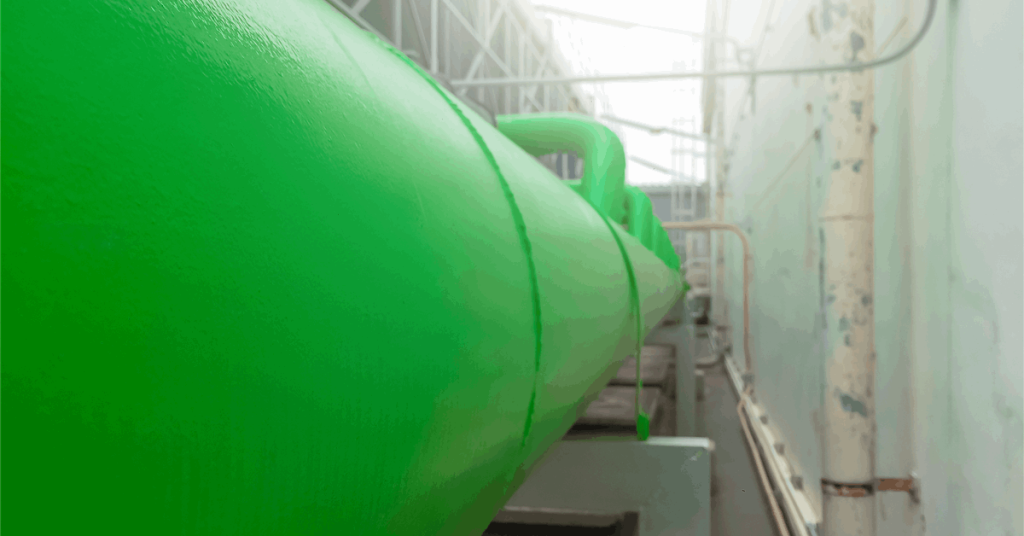OMV AG has laid the foundation stone for a 140-megawatt (MW) electrolyzer to produce up to 23,000 metric tons a year of hydrogen in Bruck an der Leitha, Lower Austria.
Expected to start production 2027, it will be the biggest renewable hydrogen plant in Austria and Southeastern Europe and among the top five across the continent, Austria’s state-backed OMV said in a statement on its website. The plant’s electrolytic process to split water into hydrogen and oxygen will use wind, solar and hydro power.
The plant will partly fuel OMV’s Schwechat refinery to cut carbon emissions by up to 150,000 metric tons per annum (MMtpa), around 10 percent of the refinery’s production-related emissions, OMV said.
The hydrogen facility and the refinery, which has a crude oil processing capacity of 9.6 MMtpa, will be connected via a 22-kilometer (13.67-mile) pipeline.
“OMV is investing a sum in the mid-hundreds of millions of euros in the plant”, the company said.
It said it is finalizing a funding agreement with the European Hydrogen Bank.
“We are creating an integrated ecosystem based on the use of green hydrogen – supported by technological innovation, modern infrastructure, political support and strong partnerships”, said chair and chief executive Alfred Stern. “Green hydrogen is a key component of our Strategy 2030 as a means of decarbonizing our fuel production and a key to OMV’s responsible transformation”.
OMV awarded Germany’s Siemens Energy AG the engineering, procurement and construction contract, including the supply of the plant’s electrolysis technology. OMV contracted Vienna-ased STRABAG AG for the civil construction work.
On April 30 OMV announced the start of production at its first commercial-scale green hydrogen facility, built with a capacity of 1,500 MMtpa at the Schwechat refinery. The plant uses a 10-MW PEM (polymer electrolyte membrane) electrolyzer powered by hydro, solar and wind energy.
The process avoids up to 15,000 metric tons of carbon dioxide (CO2) emissions a year, equivalent to the CO2 consumption of 2,000 persons per year based on a European Union average, according to OMV.
Output from the hydrogen plant will be used to decarbonize the refinery and produce more sustainable fuels and chemicals including sustainable aviation fuel and renewable diesel, OMV said.
Also on April 30 OMV and Abu Dhabi Future Energy Co PJSC (Masdar) said they had signed a letter of intent to collaborate on producing green hydrogen and derivatives.
The partnership would involve producing synthetic aviation fuel and other synthetic fuels, as well as synthetic chemicals, in Austria, the United Arab Emirates and northern and central Europe.
“By leveraging our combined capabilities, Masdar and OMV are looking to produce green hydrogen and derivatives at industrial scale, supporting decarbonization efforts and building the green hydrogen value chain”, Masdar chief green hydrogen officer Mohammad Abdelqader El Ramahi said.
To contact the author, email jov.onsat@rigzone.com
What do you think? We’d love to hear from you, join the conversation on the
Rigzone Energy Network.
The Rigzone Energy Network is a new social experience created for you and all energy professionals to Speak Up about our industry, share knowledge, connect with peers and industry insiders and engage in a professional community that will empower your career in energy.
element
var scriptTag = document.createElement(‘script’);
scriptTag.src = url;
scriptTag.async = true;
scriptTag.onload = implementationCode;
scriptTag.onreadystatechange = implementationCode;
location.appendChild(scriptTag);
};
var div = document.getElementById(‘rigzonelogo’);
div.innerHTML += ” +
‘‘ +
”;
var initJobSearch = function () {
//console.log(“call back”);
}
var addMetaPixel = function () {
if (-1 > -1 || -1 > -1) {
/*Meta Pixel Code*/
!function(f,b,e,v,n,t,s)
{if(f.fbq)return;n=f.fbq=function(){n.callMethod?
n.callMethod.apply(n,arguments):n.queue.push(arguments)};
if(!f._fbq)f._fbq=n;n.push=n;n.loaded=!0;n.version=’2.0′;
n.queue=[];t=b.createElement(e);t.async=!0;
t.src=v;s=b.getElementsByTagName(e)[0];
s.parentNode.insertBefore(t,s)}(window, document,’script’,
‘https://connect.facebook.net/en_US/fbevents.js’);
fbq(‘init’, ‘1517407191885185’);
fbq(‘track’, ‘PageView’);
/*End Meta Pixel Code*/
} else if (0 > -1 && 75 > -1)
{
/*Meta Pixel Code*/
!function(f,b,e,v,n,t,s)
{if(f.fbq)return;n=f.fbq=function(){n.callMethod?
n.callMethod.apply(n,arguments):n.queue.push(arguments)};
if(!f._fbq)f._fbq=n;n.push=n;n.loaded=!0;n.version=’2.0′;
n.queue=[];t=b.createElement(e);t.async=!0;
t.src=v;s=b.getElementsByTagName(e)[0];
s.parentNode.insertBefore(t,s)}(window, document,’script’,
‘https://connect.facebook.net/en_US/fbevents.js’);
fbq(‘init’, ‘1517407191885185’);
fbq(‘track’, ‘PageView’);
/*End Meta Pixel Code*/
}
}
// function gtmFunctionForLayout()
// {
//loadJS(“https://www.googletagmanager.com/gtag/js?id=G-K6ZDLWV6VX”, initJobSearch, document.body);
//}
// window.onload = (e => {
// setTimeout(
// function () {
// document.addEventListener(“DOMContentLoaded”, function () {
// // Select all anchor elements with class ‘ui-tabs-anchor’
// const anchors = document.querySelectorAll(‘a .ui-tabs-anchor’);
// // Loop through each anchor and remove the role attribute if it is set to “presentation”
// anchors.forEach(anchor => {
// if (anchor.getAttribute(‘role’) === ‘presentation’) {
// anchor.removeAttribute(‘role’);
// }
// });
// });
// }
// , 200);
//});

